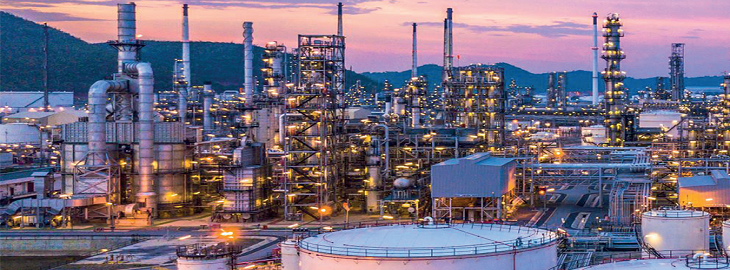LNG - Liquefied Natural Gas Production Solutions

Liquefied Natural Gas (LNG) is natural gas that has been cooled to a liquid state for ease of storage and transport. It’s a key part of the global energy sector because it allows natural gas to be transported across long distances where pipelines are not feasible. LNG production involves several key stages:
1. Natural Gas Extraction:
Natural gas is extracted from underground reservoirs or from shale formations using hydraulic fracturing (fracking). This gas is primarily methane, though it can contain various other hydrocarbons and impurities.
2. Purification (Pre-treatment):
Before liquefaction, the natural gas must be purified to remove impurities like water, carbon dioxide (CO2), hydrogen sulfide (H2S), and other trace contaminants. This is critical because contaminants can freeze at low temperatures, which could damage the liquefaction equipment or affect the quality of the LNG.
3. Liquefaction Process:
The purified natural gas is then cooled to extremely low temperatures, typically between -160°C and -162°C (-256°F to -260°F), at which point it condenses into a liquid. This process is achieved using refrigeration cycles, often through a process called cascade refrigeration, which involves multiple stages of cooling with different refrigerants.
Common liquefaction technologies include:
Mixed Refrigerant Cycle (MRC)
Conventional Nitrogen Expansion Cycle
Single and Dual-Mixed Refrigerant Systems
These processes utilize compressors, turbines, and heat exchangers to remove heat from the gas, causing it to condense into a liquid.
Back to Services
1. Natural Gas Extraction:
Natural gas is extracted from underground reservoirs or from shale formations using hydraulic fracturing (fracking). This gas is primarily methane, though it can contain various other hydrocarbons and impurities.
2. Purification (Pre-treatment):
Before liquefaction, the natural gas must be purified to remove impurities like water, carbon dioxide (CO2), hydrogen sulfide (H2S), and other trace contaminants. This is critical because contaminants can freeze at low temperatures, which could damage the liquefaction equipment or affect the quality of the LNG.
3. Liquefaction Process:
The purified natural gas is then cooled to extremely low temperatures, typically between -160°C and -162°C (-256°F to -260°F), at which point it condenses into a liquid. This process is achieved using refrigeration cycles, often through a process called cascade refrigeration, which involves multiple stages of cooling with different refrigerants.
Common liquefaction technologies include:
Mixed Refrigerant Cycle (MRC)
Conventional Nitrogen Expansion Cycle
Single and Dual-Mixed Refrigerant Systems
These processes utilize compressors, turbines, and heat exchangers to remove heat from the gas, causing it to condense into a liquid.